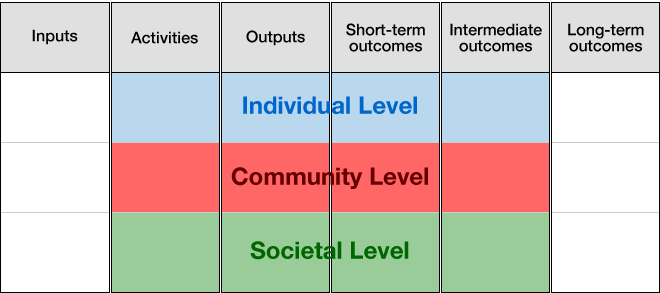Introduction to Activity
To practice building your own logic model, select one of the three scenarios on improving access to healthy food which address the different levels of the ecological model. Read the scenario and identify the inputs, long-term outcomes, intermediate outcomes, short-term outcomes, outputs, and activities to put in the logic model. During the activity, you will be guided through constructing a logic model for the scenario you selected.
An important framework to keep in mind when creating logic models is the social ecological model. This model, used throughout health promotion and education, states that health is a influenced by a combination of individual behaviors and the environments in which individuals live, including family settings, social networks, organizations, communities, and society.
To create meaningful interventions through logic modeling, public health professionals must consider behavior change across both individual and environmental levels of the social ecological model. In some logic models, to differentiate between levels of the social ecological model that are being targeted for behavior change, public health practitioners use matrices to separate the inputs, activities, outputs, and outcomes by levels of the social ecological model (i.e., individual, interpersonal, organizational, community, and societal).
As you create your own logic model in this activity, use the color wheel () on the text boxes to help you differentiate which levels you are intervening on. For example, you can use blue to designate activities, outputs, and outcomes on the individual level and green to designate activities, outputs, and outcomes on the societal level; however, you can choose whichever colors you prefer for each level.

